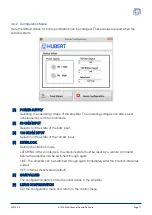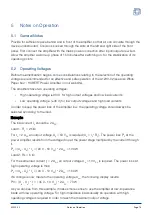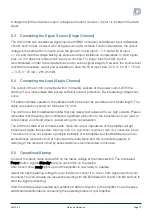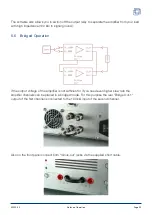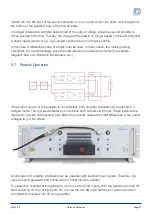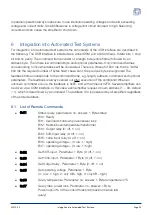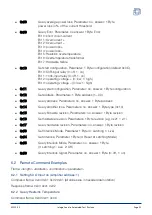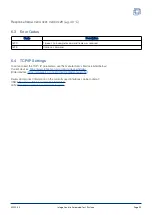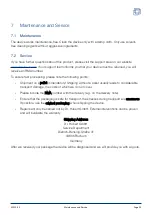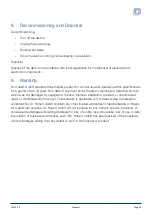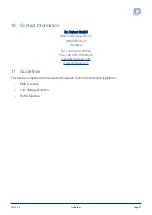
5 Notes on Operation
5.1 General Notes
Provide for sufficient space behind and in front of the amplifier, so that air can circulate through the
device unobstructed. Cool air is sucked through the slots at the left and right side of the front
panel. First connect the amplifier with the mains power connection after input/output are wired.
Allow the amplifier a warm-up phase of 15 minutes after switching on, for the stabilization of its
operating points.
5.2 Operating Voltages
Before the
amplification
begins, some considerations relating to the selection of the operating
voltage are recommended for an effective and safe operation of the A1230-02 (see also White
Paper No.1: HUBERT Power Amplifier on our website).
The amplifiers have two operating voltages:
•
High operating voltage (±90 V) for high output voltages and low load currents
•
Low operating voltage (±45 V) for low output voltages and high load currents
In order to keep the power loss of the amplifier low, the operating voltage should always be
selected according to the load.
Example:
The load current I
L
should be 2 A
DC
.
Load 1: R
L
= 25
For I
L
= 2 A
DC
an output voltage U
A
= 50 V
DC
is required (U
A
= I
L
* R
L
). The power loss P
V
at the
power amplifier results from the voltage drop at the power stage multiplied by the current through
it.
P
V
= (U
B
- U
A
) * I
L
= ( 90 V - 50 V
DC
) * 2 A
DC
= 100 W
Load 2: RL = 5
For the same load current I
L
= 2 A
DC
an output voltage U
A
= 10 V
DC
is required. The power loss at
high operating voltage is thus:
P
V
= (U
B
- U
A
) * I
L
= ( 90 V - 10 V
DC
) * 2 A
DC
= 160 W
If a change is now made to the operating voltage U
low
, the following display results:
PV = (U
B
- U
A
) * I
L
= ( 45 V - 10 V
DC
) * 2 A
DC
= 70 W
As you can see from this example, it makes more sense to use the amplifier at low-impedance
loads with low operating voltage. For high impedance loads usually an operation with high
operating voltage is required in order to reach the maximum output voltage
A1230-02
Notes on Operation
Page 18














